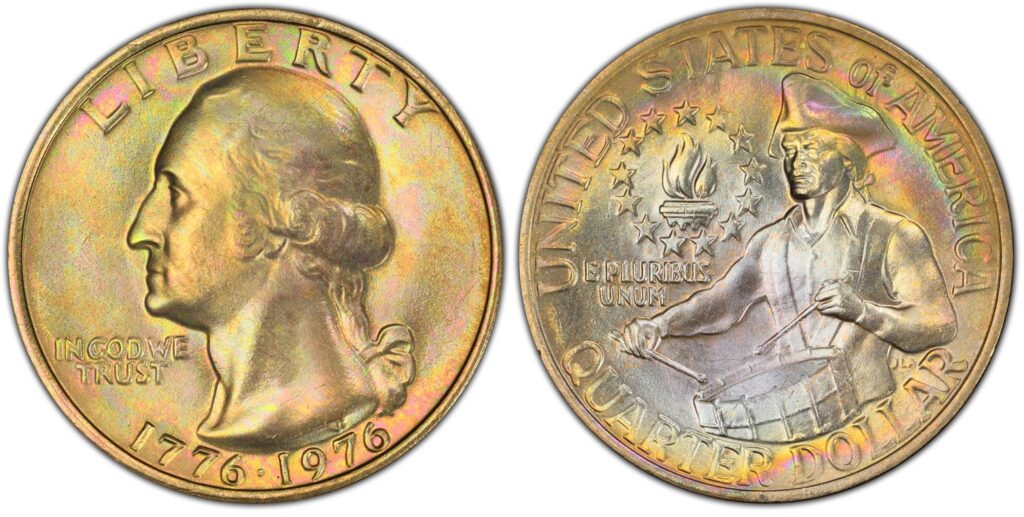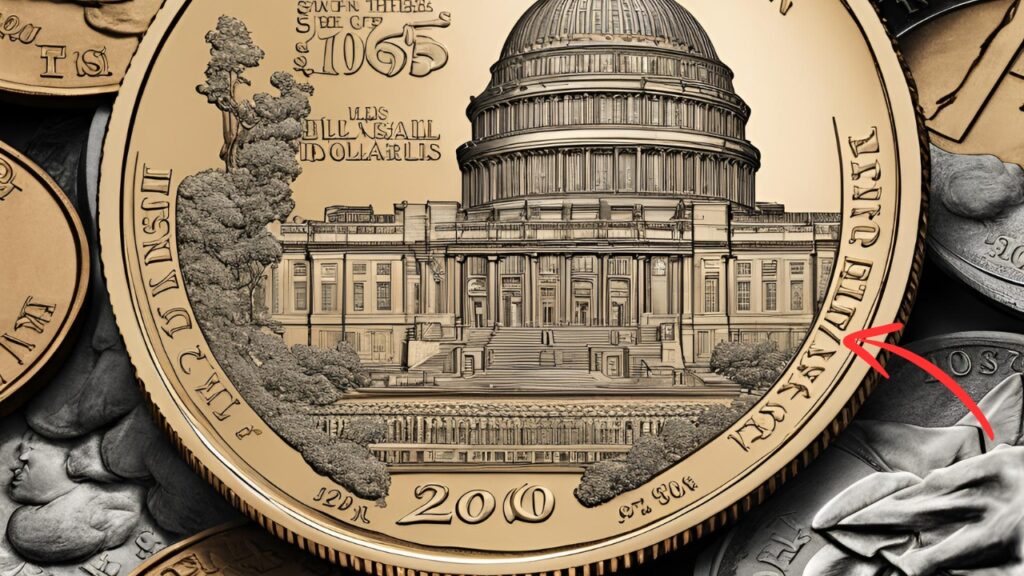The 1976 Bicentennial Quarter is one of the most popular coins among collectors. Minted to celebrate the 200th anniversary of the United States, these quarters feature a unique reverse design showcasing a colonial drummer, making them stand out from regular Washington quarters. While millions of these coins were produced, some rare varieties can be worth significant amounts of money. If you’re looking to find these valuable quarters, here’s a simple trick to help you identify them and increase your chances of adding them to your collection.
Understanding the Value of Bicentennial Quarters
Before diving into the trick for finding rare Bicentennial quarters, it’s crucial to understand what makes some of these coins more valuable than others. Several factors determine their worth, including mint marks, composition, and minting errors.
1. Mint Marks and Silver Composition
Bicentennial quarters were minted in three locations:
- Philadelphia (no mint mark)
- Denver (D mint mark)
- San Francisco (S mint mark)
Most Bicentennial quarters are made of a copper-nickel clad composition, which holds little additional value beyond face value. However, the U.S. Mint also released 40% silver quarters, exclusively minted in San Francisco. These silver quarters are much rarer and can fetch significantly higher prices, especially in uncirculated condition.
To check if your quarter is silver, inspect the coin’s edge. A silver quarter will have a solid silver edge, while a copper-nickel clad quarter will show a visible copper band. Additionally, silver quarters weigh approximately 5.75 grams, slightly more than the standard 5.67 grams of clad quarters.
For more information on mint marks and compositions, visit the United States Mint website: https://www.usmint.gov
2. Rare Errors and Varieties

Some Bicentennial quarters have minting errors that increase their value. These include:
- Double Die Obverse – When the coin’s design appears slightly duplicated due to a misalignment during minting.
- Off-Center Strikes – When the coin design is misaligned, partially missing details.
- Clipped Planchets – When a portion of the coin’s edge is missing due to improper cutting during production.
Coins with these errors can be worth anywhere from hundreds to thousands of dollars, depending on their rarity and condition.
For a guide on spotting coin errors, visit the Numismatic Guaranty Company (NGC) website: https://www.ngccoin.com
The Simple Trick to Finding Rare Bicentennial Quarters
Coin Roll Hunting
One of the easiest and most cost-effective ways to find rare Bicentennial quarters is through coin roll hunting. This involves obtaining rolls of quarters from banks and searching through them for rare varieties. Many people overlook these quarters in circulation, which means valuable ones might still be available in everyday transactions.
How to Coin Roll Hunt:
- Visit a local bank and request quarter rolls. Some banks allow non-customers to exchange cash for rolls, but having an account can make the process easier.
- Look for mint marks—San Francisco-minted quarters are the first sign of potential value.
- Inspect the edge for silver content. A solid silver edge means you’ve found a 40% silver quarter.
- Examine the coin closely under a magnifying glass to check for errors or doubled lettering.
- Weigh the coin with a digital scale for precise identification of silver quarters.
Coin roll hunting requires patience, but many collectors have found high-value Bicentennial quarters using this method.
For information on obtaining coin rolls from banks, check out the Federal Reserve Bank website: https://www.federalreserve.gov
How to Preserve and Store Rare Bicentennial Quarters

If you find a valuable Bicentennial quarter, proper handling and storage are essential to maintain its condition and maximize its worth.
- Handle the coin by the edges to avoid fingerprints and oils.
- Use archival-quality holders or coin flips to protect the surface.
- Avoid cleaning the coin, as doing so can significantly reduce its value.
For expert guidelines on coin preservation, refer to the American Numismatic Association (ANA) website: https://www.money.org
Conclusion
Bicentennial quarters are still in circulation, and with the right knowledge, you can find rare and valuable ones. By utilizing coin roll hunting, inspecting for silver content, and checking for mint errors, you can significantly improve your chances of discovering a hidden gem. With a little patience and persistence, you might just stumble upon a rare Bicentennial quarter worth far more than 25 cents!
For more updates on coin collecting and valuation, visit the United States Mint website: https://www.usmint.gov

Vikas is a seasoned finance writer with a keen eye for unraveling complex global financial systems. From government benefits to energy rebates and recruitment trends, he empowers readers with actionable insights and clarity. When he’s not crafting impactful articles, you can find him sharing her expertise on Social Media. You can connect with him via email at [email protected].









